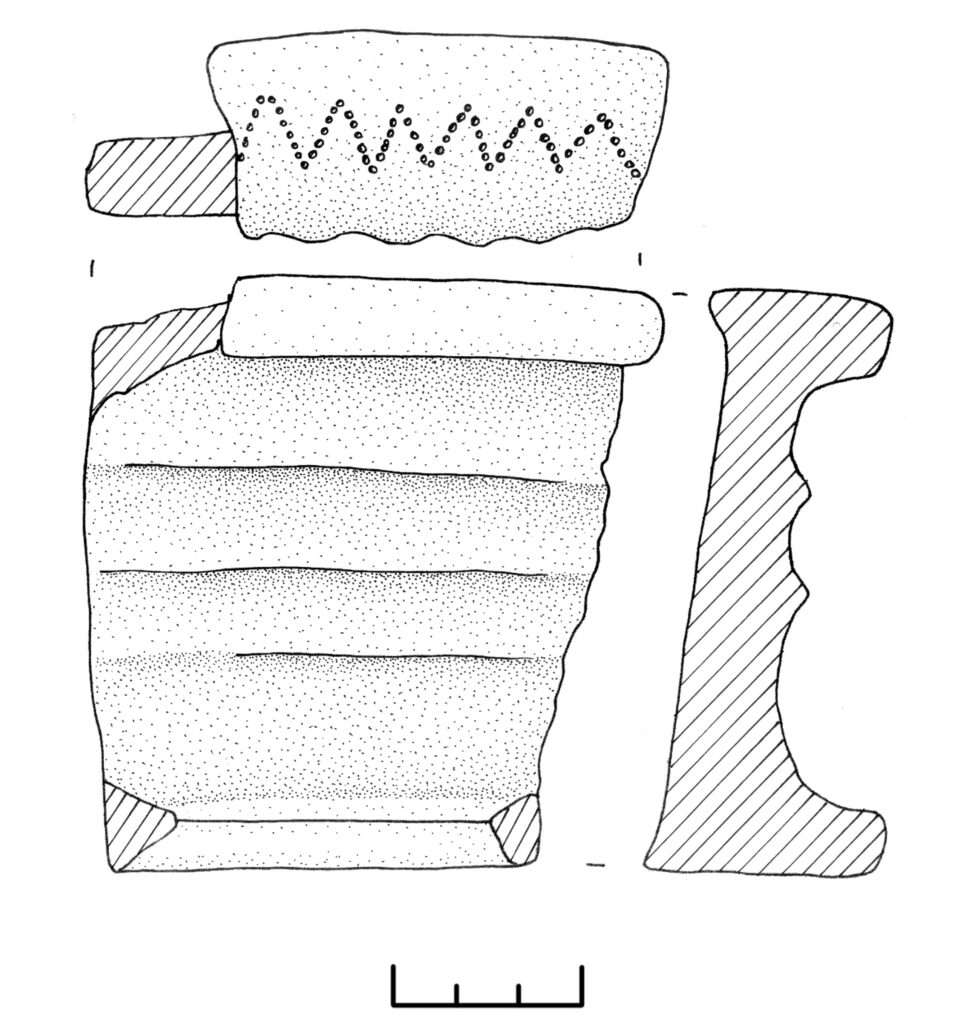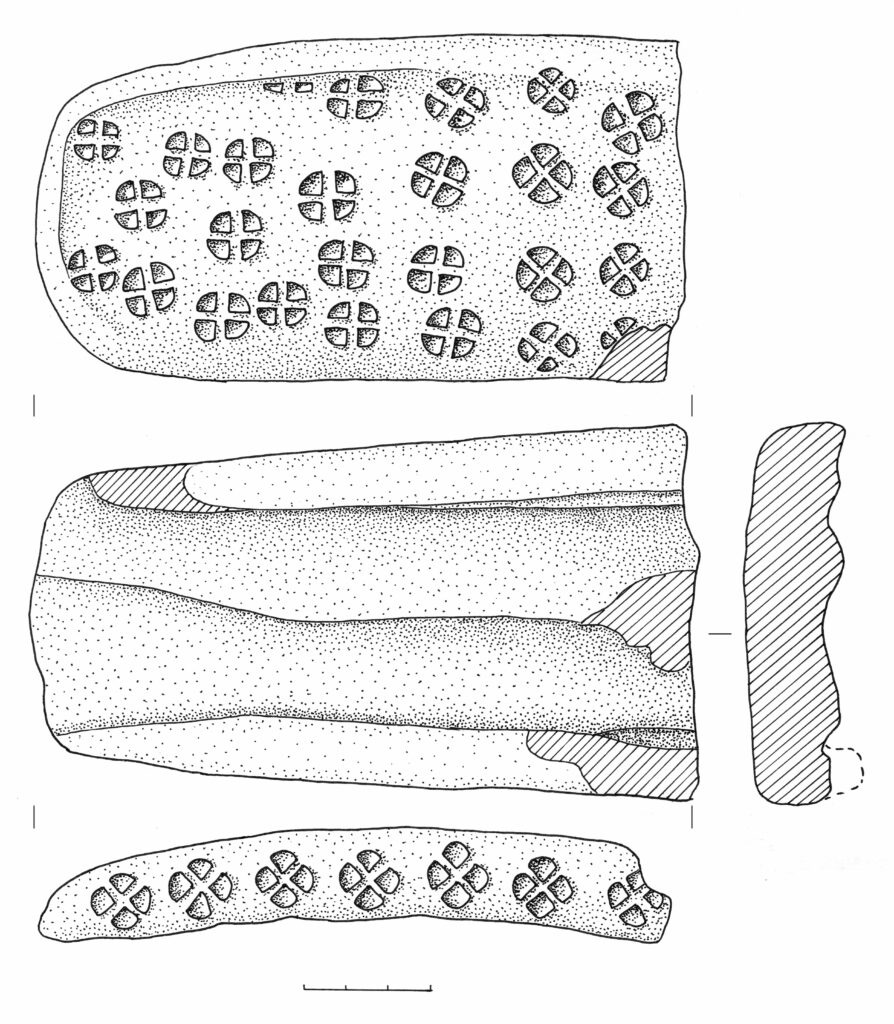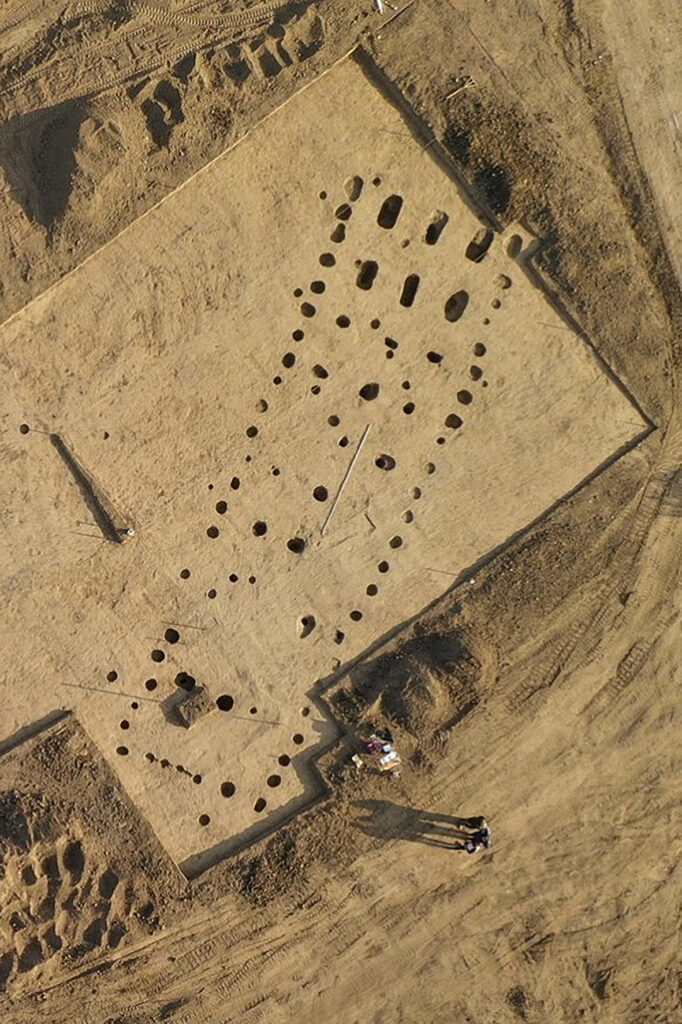Archaeological research is not restricted to prehistoric or early historical times. The material culture of the last centuries – the period that we usually know well from historical sources – can be also obtained from excavations and provides valuable information about the everyday life in the more recent past. The research focus of Liudmyla Myronenko – research fellow at the Institute of Archaeology of National Academy of Science of Ukraine – is on the archaeology of the late medieval and early modern periods. She especially investigates ceramics: tableware and stove tiles. Since 2008, she has participated in archaeological excavations in Baturyn (the early modern capital of the Ukrainian state) and medieval sites in the Chernihiv region. Although field research in Chernihiv region has been partially suspended due to the war, our Ukrainian colleagues do not give up hope and continue to work with museum collections and provide the scientific world with new interesting materials.
The material culture of the early modern time is one of the least investigated topics of modern Ukrainian archaeology. Due to the limited quantity of written records about the culture and lifestyle of the population of Ukraine in the 17th and 18th centuries, these questions are addressed almost exclusively by archaeological research. During the Soviet era the study of early modern sites was practically not carried out. The objects of that time were not studied, and only the most appealing artifacts entered the museums. The situation changed in the 1990s. And while tableware and stove tiles have caught the attention of scientists due to their decorative appeal and chronological sensitivity, technical ceramics, not least because of the difficulty in attribution, remain outside the scientific discussion.
Ceramic frames of the stove mouth are technical ceramic products in the form of arc-shaped plates (Fig. 1), which were placed in the mouth of the stove to strengthen and decorate its structure.
Until now, over 50 similar ceramic frames of the stove mouth have been identified in museum collections. Most of them are fragments, but among the collected material there are edge parts, which have been divided into two varieties: with a flat finish (Fig. 2), which was located at the base of the stove, and central parts with a figured edge cut (Fig. 3). These cutouts served to connect several arches (usually 3–4) to create a single arched structure that strengthened the mouth of the stove. Such mouths had a semicircular or subtriangular shape and a height of 30–40 cm, which correlates with the height of typical pots of the 17th–18th centuries. Some of the products were decorated with simple ornaments such as floral stamps (Fig. 4), lines, waves, zigzag (Fig. 5), or simply holes (Fig. 1).

Besides the information on the archaeological contexts – location of the objects and the accompanying ceramic material – it was possible to obtain further technological details of stove construction. Ceramic frames were used in the design of the 17th century’s dome-shaped clay stoves and even pottery kilns. They were also used in the construction of tile-stoves, as evidenced by their discovery in complexes together with stove tiles. In this case, we can talk about the bifunctional purpose of such a tile-stove: for room heating and cooking.
To date, all finds known to us have come from the Middle Dnieper region and date from the 17th to the middle of the 18th centuries. The closest analogies were found on the territory of Belarus, which may indicate a certain vector of their appearance in Ukrainian lands. The future scientific circulation of these results will allow us to expand our knowledge of the material culture of the early modern time in Ukraine. It will also help to prevent misinterpretation of this unique category of ceramic material.
Liudmyla Myronenko






